World Travel Awards Winner
Endorsed by ASTA
In Alliance with Regenera
Rated Excellent by Tripadvisor
Cusco was the capital of the Inca Empire, the most extensive and powerful state ever to exist on the continent of South America around the century XV. It’s situated in the Huatanay high Andean valley, at 3,226 m.a.s.l. in the middle of the south Peruvian Andes. Even today, it’s still possible to observe beautiful Inca temples made with stones carved and fitted to perfection, without mortar, mixed with Spanish colonial buildings and mansions. Proof of the conjunction of Inca and Spanish cultures (invader).
Charming narrow and cobblestone streets, cozy alleys, and quaint streets complete your view of Cusco. But Cusco has more treasures to offer, like the Sacred Valley with paradise weather, Inca archaeological rests on the top of magic hills, vivid rainbow mountains, glacial lagoons, and even lush Amazon forests with awesome fauna and flora.
In addition, Cusco still being much more! Activities that you can develop there go from Cultural tourism in its historical center, Sacred Valley, and Machu Picchu. Passing by hiking and trekking in its surrounding mountains. Kayaking, rappelling, biking, boat rides, swimming, paddle surfing, and more adventure sports in the Sacred Valley and its Amazon zone. To mystic tourism with shamans in the middle of the Cusco jungle, or experiential tourism with indigenous Inca communities.
As you can see, Cusco has everything! Not in vain, the city is the tourist capital of Peru. Even, many international flights arrive at its airport from the main South American capitals, without scales!
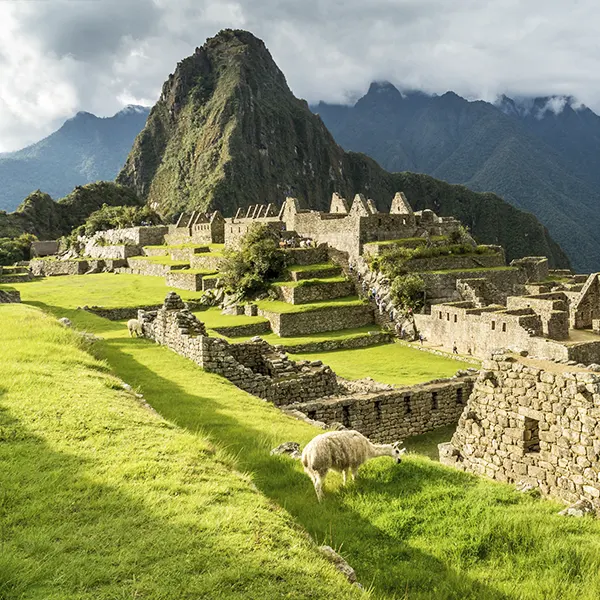
6 Days / 5 Nights
Lima, Cusco, Sacred Valley, Machu Picchu
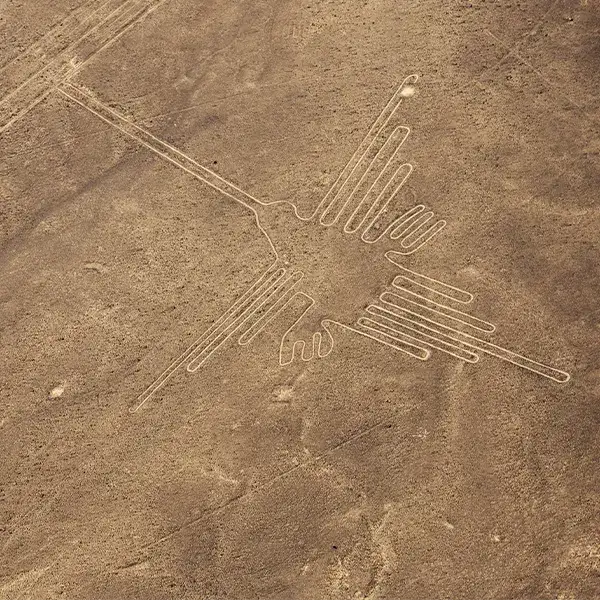
8 Days / 7 Nights
Lima, Ica, Paracas, Nazca, Cusco, Sacred Valley, Machu Picchu
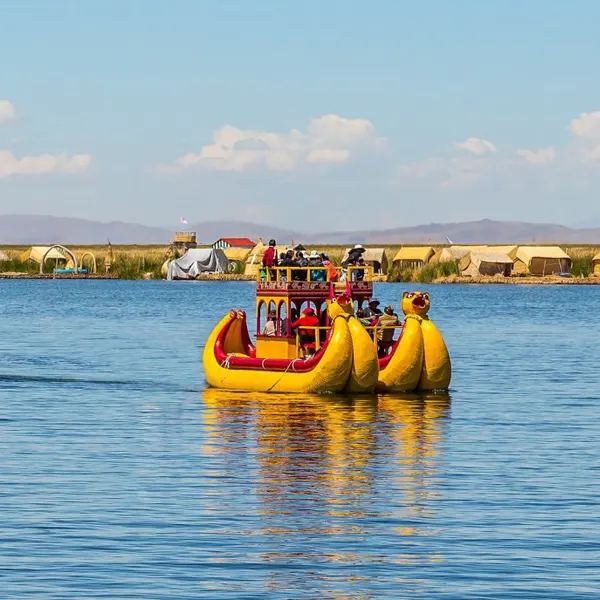
8 Days / 7 Nights
Lima, Cusco, Sacred Valley, Machu Picchu, Puno, Lake Titicaca
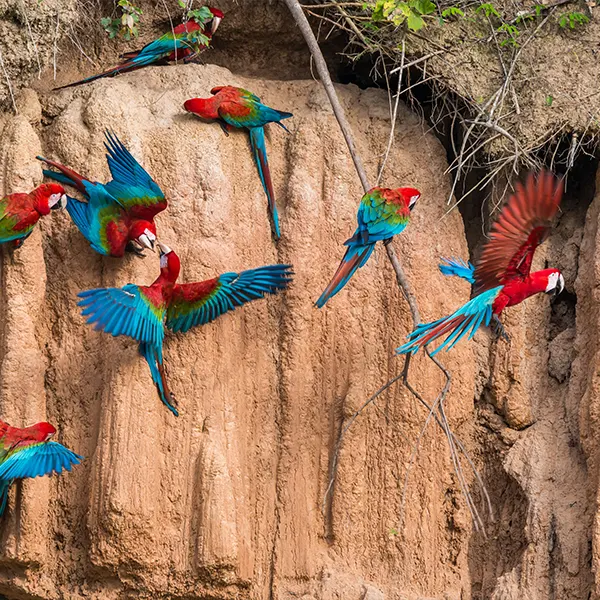
9 Days / 8 Nights
Lima, Cusco, Sacred Valley, Machu Picchu, Puerto Maldonado, Tambopata
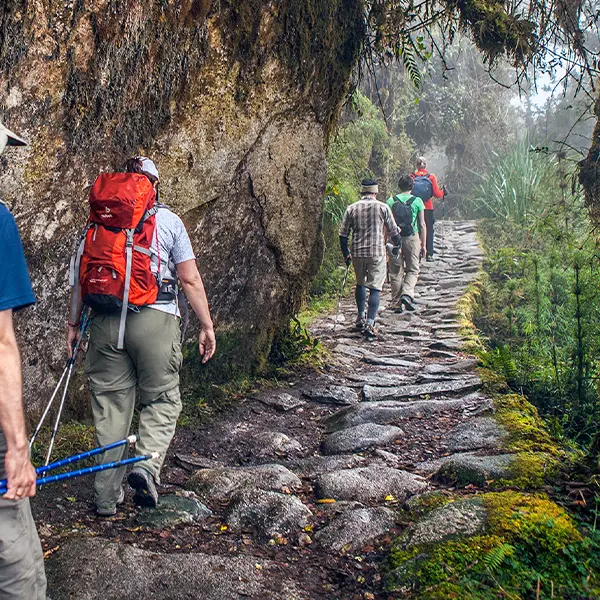
9 Days / 8 Nights
Lima, Cusco, Sacred Valley, Inca Trail, Machu Picchu
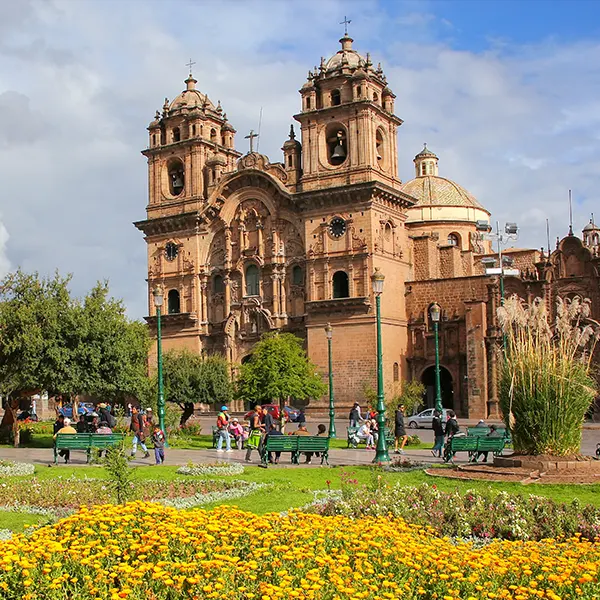
11 days / 10 nights
Lima, Puerto Maldonado, Cusco, Sacred Valley, Machu Picchu, Puno, Lake Titicaca
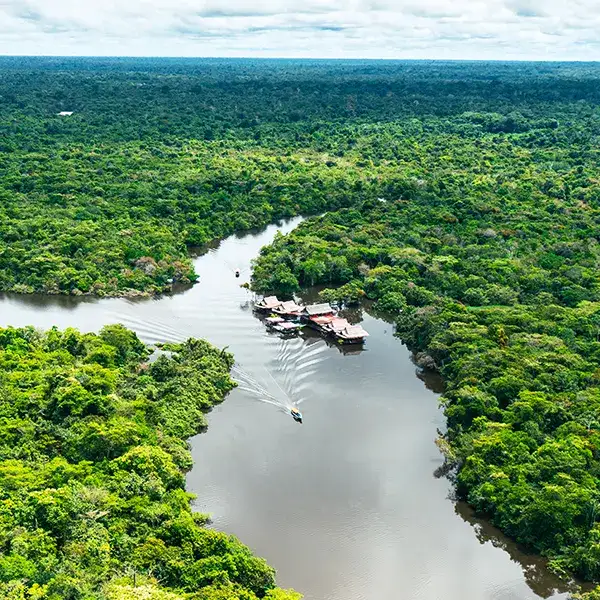
11 days / 10 nights
Lima, Cusco, Sacred Valley, Machu Picchu, Iquitos
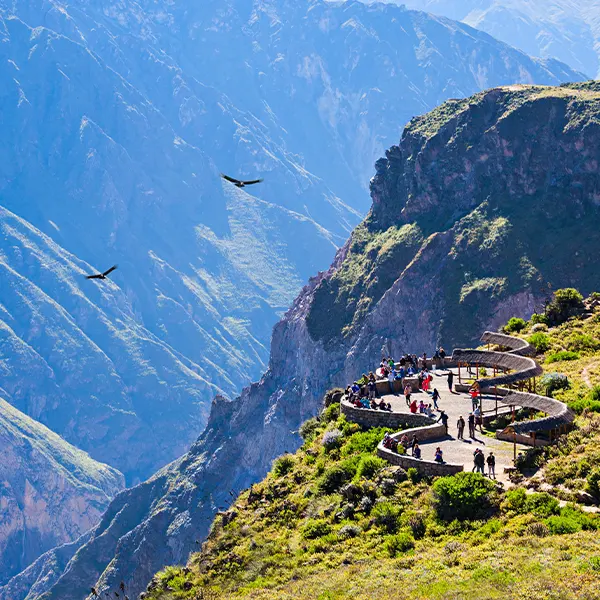
11 Days / 10 Nights
Lima, Arequipa, Colca Canyon, Puno, Lake Titicaca, Cusco, Sacred Valley, Machu Picchu
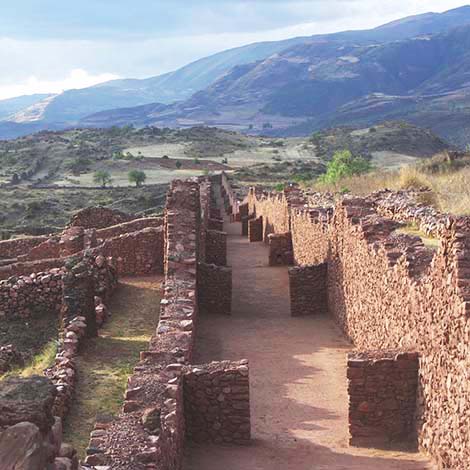
Cusco was inhabited by local small ethnic groups without any urban, religious or politic development until the year 750 AD, when the invasion of the Wari culture (from Ayacucho and Apurimac, north east of Cusco) occurred.
The Wari introduced great chances in the area, such as the religious cult of the Wiracocha deity, the state organization for tax paying, the massive urbanization of the zone and the development of regional and imperial commerce.
For unknown reasons the Wari culture disappeared from Cusco around the year 1000 AD, however its cultural and material legacy (road network) was subsequently used by the Incas.
During the next 200 years migratory groups co-existed in the region with the Ahjamama tribe (translated as: “mother of the chicha”) that had lived in the area previously. This historic information coincides with the myths about the foundation of Cusco, which confirm that the Incas were not originally from Cusco.
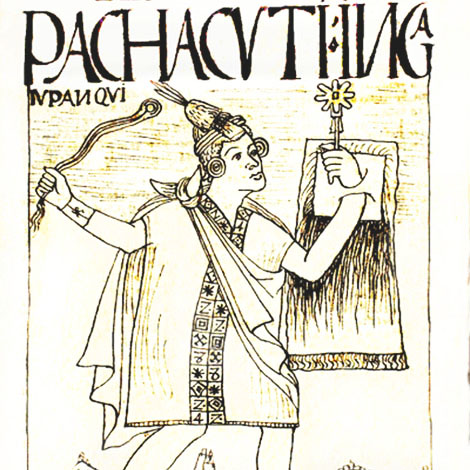
The Inca State was established around the year 1250 AD. This was only 3 centuries before the arrival of the Spaniards. According to the historians it started as a small, local tribe, like many other that existed at the same time in the Andes. Ins territory did not exceed 50 hectares.
Towards the year 1300 the tribe peacefully joined other ethnic groups from the region, forming a Quechua confederation that embraced from the area of Sicuani (south of Cusco) to Andahuaylas (in the north). From the very beginning and probably even before the Incas, Cusco was an important ceremonial center and maintained its importance during the time of the expansion.
Around 1430 the Chancas from the North and East (Ayacucho and Apurimac) invaded the area. The Incas and the Chancas warred so violently that the myth about the appearance of the great emperor Pachacutec originated. His father, the former Inca Wiracocha with two of his sons fled from the Chancas siege. Cusi Yupanqui (Pachacutec) was the only one who stayed and faced the Chancas in two battles, winning both of them. The victory catapults him as an Inca and generates a myth according to which the rocks were turned into soldiers by the solar deity (Inti) in order to help Pachacutec in the fight. After defeating the Chancas the Incas stated the age of the expansion and the apogee that lasted from 1438 to 1527, during which they managed to conquer the Chimu kingdom in the north of modern Peru.
The Inca State or Tahuantinsuyo expanded almost 100 times during these 90 years, from the Maule and Bio Bio rivers in Chile, including the zones of Tucuman and Mendoza (Argentina) in the south, up to the frontier between Ecuador and Colombia in the north. In the east the Incas only reached the mountainous cloud forest and in the west the whole coast was conquered.
During this period, the fine imperial Inca art was developed, ranging from beautiful stone-made temples to well finished ceramics, like decorative vessels (aryballos), for example.
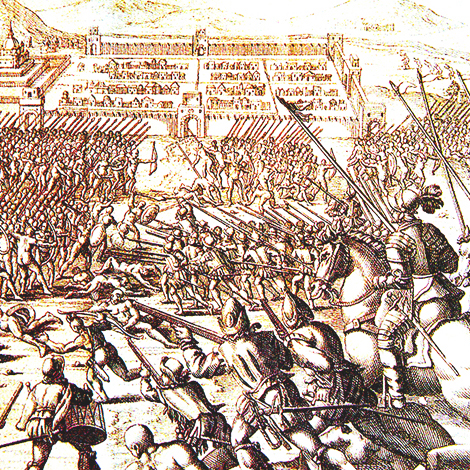
In 1532, when the Spanish arrived in Peru, Cusco was a thriving city, and capital of one of the world´s biggest empires. The Spaniards were astonished: the city´s beauty surpassed anything they had seen before in the New World; the stonework was better than any in Spain; and precious metals, used in a sacred context across the city, were in abundance throughout Q´orikancha. They lost no time in plundering its fantactic wealth Atahualpa, the emperor at the time, was captured by Spanish conquistadors in Cajamarca while en route to Cusco, returning from bloody battles in the northern extremity of the empire. Hearing from the Emperor Atahualpa himself of Cusco´s great wealth as the center of Inca religious and political power, Francisco Pizarro reached the native capital on November 15, 1533.
The Spanish city was officially founded on March 23,1534. Cusco was divided up among 88 of Pizarro´s men who chose to remain there as settlers. Manco Inca, a blood relative of Atahualpa – who was murdered by Pizarro was set up as a pupper ruler, governing from a new place on the hill just below Sacsayhuaman. After Pizarro´s departure, and following twelve months of power struggles, his sons Juan and Gonzalo came out on top and were then free to abuse Manco and his subjects, which eventually provoked the Incas to open resistance. In April 1536 Manco fled to Yucay, in the Sacred Valley, to gather forces for the Great Rebellion.
Within days, the two hundred Spanish defenders, with only eighty horses, were surrounded in Cusco by over 100,000 rebel Inca Warriors, on May 6, Manco´s men laid siege to the city. After a week, a few hundred mounted Spanish soldiers launched a desperate counterattack on the Inca vase in Sacsayhuaman and, incredibly, defeated the native stronghold, putting some 1500 warriors to the sword as they took it.
Spanish – controlled Cusco never again came under such serious threat from its indigenous population, but its battles were far from over. By the end of the rains the following year, a rival conquistador, Almagro’s dad seized Cusco for himself until Francisco Pizarro defeated the rebel Spanish troops a few months later, and had Almagro garroted in the main plaza. Around the same time, a diehard group of rebel Incas held out in Vilcabamba until 1572, when the Spanish colonial viceroy, Toledo, captured the leader Tupac Amaru and had him beheaded in the Plaza de Armas.
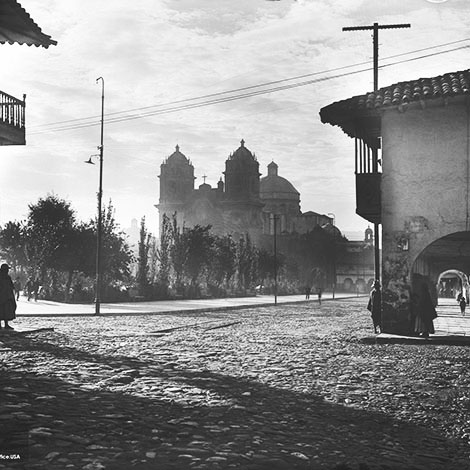
From then on the city was left in relative peace, ravaged only by the great earthquake of 1650. After this dramatic tremor, remarkably illustrated on a huge canvas in La Catedral de Cusco, Bishop Mollinedo was largely responsible for the reconstruction of the city, and his influence is also closely associated with Cusco´s most creative years of art. The Cusqueña school, which emerged from his patronage, flourished for the next two hundred years, and much of its finer work, produced by native Quehua and mestizo artists such as Diego Quispe Tito Inca, Juan Espinoza de los Monteros, Fabian Ruiz and Antonio Sinchi Roca, is exhibited in museums and churches around the city.
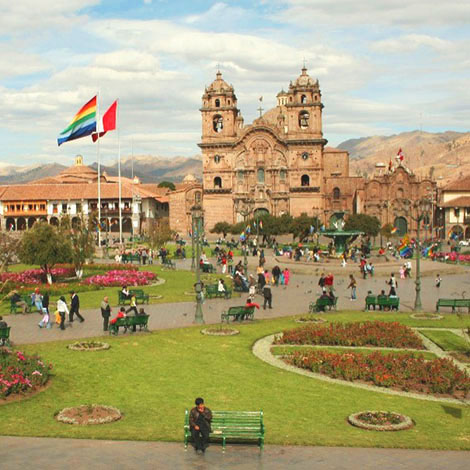
In spite of this cultural heritage, Cusco only received international attention after the discovery of Machu Picchu by Hiram Bingham´s archeological expedition in 1911. with the advent of air travel and global tourism, Cusco was slowly transformed from a quiet colonial city in the remote Andes into a mayor tourist center.
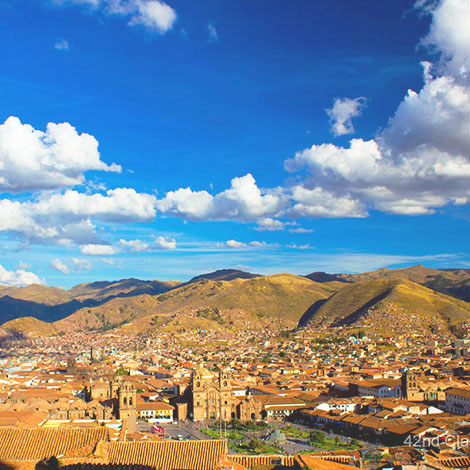 The city of Cusco is located in the Huatanay Valley in the South part of Peru. Highland River with great soil have made the Cusco area a perfect location for agriculture and it is thought that the area has been settled for more than 3000 years.
The city of Cusco is located in the Huatanay Valley in the South part of Peru. Highland River with great soil have made the Cusco area a perfect location for agriculture and it is thought that the area has been settled for more than 3000 years.
Cusco is located at an altitude of 11120 feet above sea level, surrounded by mountain peaks the city is protected from the harsh highland climates. In the Sacred Valley close by the elevation is somewhat lower at 9420 feet and Machu Picchu even lower at 7972 feet.
As Cusco is located high in the Andes mountain range, the weather is very changeable. Days can be warm and night are usually very cold.
Altitude sickness is a concern for people traveling from seal level. Symptoms include headache, fatigue, insomnia and no appetite. The altitude effect people differently with most people taking a few days to adjust. Before you travel to Peru, it is a good idea to ask your doctor for some medication to help prevent altitude sickness. Also, when you arrive into Cusco or Puno drink plenty of Coca leaf tea.
As the imperial capital during Inca times, Cusco was the most important place of pilgrimage in South America, a status it retains today. During Easter, June and Christmas, the city center becomes the focus for relentless fiestas and carnivals celebrated with extravagant processions blending pagan pre – Columbian and Catholic colonial cultures.
Around Jan 20 Adoración de los Reyes (Adoration of the Kings). Ornate and elaborate processions leave from San Blas church and parade through Cusco.
Last week of Jan Pera Chapch’y (Festival of the Pear). A harvest festival in San Sebastián, 4km southeast of Cusco, with lively street stalls and processions.
First week of March Festival de Durasno (Festival of the Peach). Food stalls and folk dancing in Yanahuara and Urubamba.
Easter Week Semana Santa. On Easter Monday there’s a particularly splendid procession through Cusco, with a rich and evocative mix of Indian and Catholic iconography. The following Thursday a second procession celebrates the city’s patron saint, El Señor de los Temblores (Lord of Earthquakes), and on Easter Friday, street stalls sell many different traditional dishes.
May 2–3 Cruz Velacuy, or Fiesta de las Cruces (Festival of the Cross). All church and sanctuary crosses in Cusco and the provinces are veiled for a day, followed by traditional festivities with dancing and feasting in most communities. Particularly splendid in Ollantaytambo.
Weekend before Corpus Christi Qoyllur Rit’i (Snow Star, or Ice Festival). Held on the full-moon weekend prior to Corpus Christi in an isolated valley above the road from Cusco via Urcos and Ocongate to the Amazon town of Puerto Maldonado. The festival site lies at the foot of a glacier, considered an apu, or mountain god. Close by, and visible during the climb to the festival, is the sacred snowcapped peak – Ausangate. This is one of the most exciting festivals in the Americas, with live music that continues for days, several processions, and bands and dancers from various communities who make an annual pilgrimage to recharge spiritually at a time when the mountain is said to be blossoming in a metaphysical rather than botanical sense. As it involves camping at around 4600m at the foot of a glacier, it’s only for the adventurous; some tour operators organize trips, but it’s primarily a Quechua festival, with villagers arriving in their thousands in the weeks running up to it.
Corpus Christi (always nine weeks after Easter). Imposed by the Spanish to replace the Inca tradition of parading ancestral mummies, saints’ effigies are carried through the streets of Cusco, even as the local mayordomos (ritual community leaders) throw parties and feasts combining elements of religiosity with outright hedonism. The effigies are then left inside the cathedral for eight days, after which they are taken back to their respective churches, accompanied by musicians, dancers and exploding firecrackers.
Second week of June Cusqueña International Beer and Music Festival. Lively, with big Latin pop and jazz names, at its best from Thursday to Sunday.
June 16–22 Traditional folk festivals in Raqchi and Sicuani.
June 20–30 Fiesta de Huancaro. An agricultural show packed with locals and good fun, based in the Huancaro sector of Cusco (S/5 taxi ride from Plaza de Armas, or go down Avenida Sol and turn right at the roundabout before the airport).
Last week of June Cusco Carnival. Daily processions and folk dancers, plus lively music on the streets throughout the day and night, peaking with Inti Raymi.
June 24 Inti Raymi. Popular, commercial fiesta re-enacting the Inca Festival of the Sun in the grounds of Sacsayhuaman.
July 15–17 Virgen del Carmen. Dance and music festival celebrated all over the highlands, but at its best in Paucartambo.
July 28 Peruvian Independence Day. Festivities nationwide, not least in Cusco.
Sept 14–18 Señor de Huanca. Music, dancing, pilgrimages and processions take place all over the region but are especially lively in Calca, with a fair in the Sacred Valley.
First week of Dec Yawar Fiesta. A vibrant, uncommercial corrida de toros (bull fight) at the end of the week in Paruro, Cotabambas and Chumbivilcas. A condor, captured by hand, is tied to the back of a bull that battles to the death.
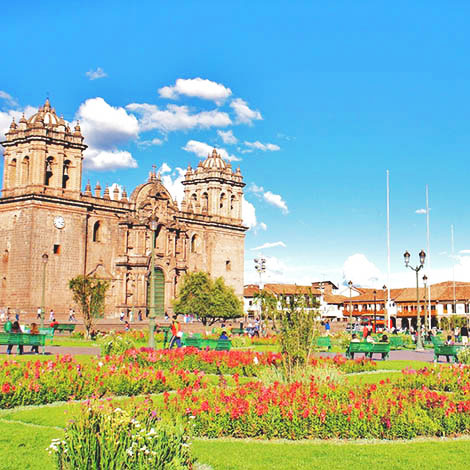
Cusco's modern and ancient center, the Plaza de Armas – whose location corresponds roughly to that of the ceremonial huacapata, the Incas ancient central plaza – is the most obvious place to get your bearings. With the unmistakeable ruins of Sacsayhuaman towering above, you can always find your way back to the plaza simply by locating the fortress or, at night, the illuminated white figure of Christ that stands beside it on the horizon. The plaza is always busy, its northern and western sides filled with shops and restaurants. The plaza´s exposed northeastern edge is dominated by the squat Catedral while the smaller Iglesia de la Compañia de Jesus, with its impressive pair of belfries, sits at the southeastern end.
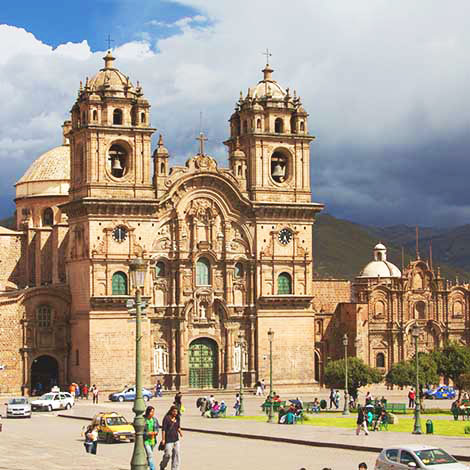
Looking downhill from the center of the plaza, the Templo de la Compañia de Jesus dominates the Cusco skyline. First built over the foundations of Amaru Cancha – originally Huayna Capac´s Palace of the Serpents – in the late 1570s, it was resurrected over fifteen years after the earthquake of 1650, which largely destroyed the original version, itself constructed in a Latin cross shape with two belfries. The interior is cool and dark, with a grand gold-leaf altarpiece a fine wooden pulpit displaying a relief of Christ, high vaulting and numerous paintings of the Cusqueña School; and transept ending in a stylish Baroque cupola. The gilded altarpieces are made of fine cedar wood and the church contains interesting oil paintings of the Peruvian Princess Isabel Ñusta. Its most impressive features, though, are the two majestic towers of the main façade, a superb example of Spanish – colonial Baroque design which has often been described in more glowing terms than the cathedral itself. On the right-hand side of the church, the Lourdes Chapel, restored in 1894, is used mostly as an exhibition center for local crafts.
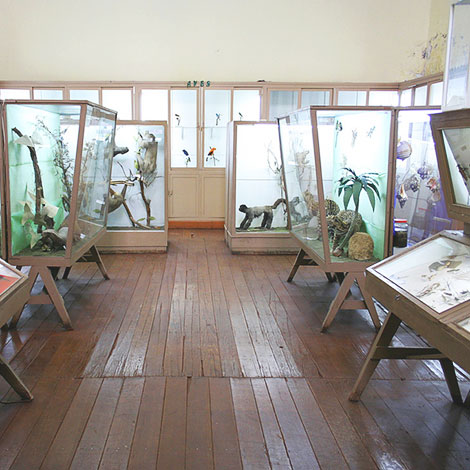
Alongside La Compañìa, an early Jesuit university building houses the Museo de Historia Natural. The entrance is off an inner courtyard, up a smalls flight of stairs to the left. The exhibits cover Peru´s coast, the Andes and the Amazon jungle, with a particularly good selection of stuffed mammals, reptiles and birds. For a small tip, the doorman outside the university building sometimes allows visitors upstairs to the top of the cupola to admire the view across the plaza.
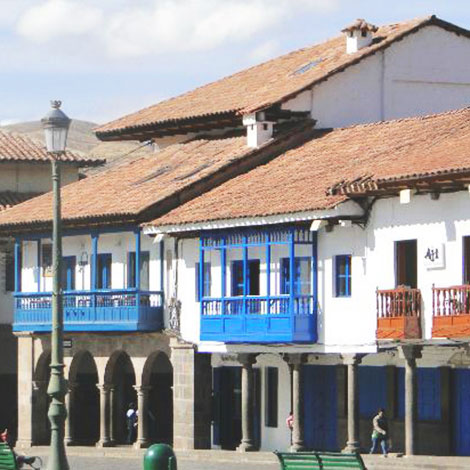
Immediately north of the Plaza de Armas, the Balcon de Cusco, a small square outside the Museo Inka, affords great views over the plaza and is where dances and firework celebrations tend to happen during festivals. There´s also a panoramic walkway leading off the square, following the rooftops up to the cobbled backstreets of upper Cusco, directly beneath the ruins of Sacsayhuaman.
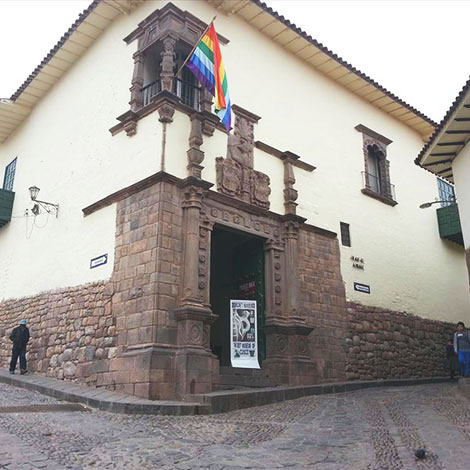
North of the cathedral, slightly uphill beside the Balcon de Cusco, you´ll find one of the city´s most beautiful colonial mansions, El Palacio del Almirante (The Admiral´s Palace). This palace now houses the Museo Inka, which boasts 10,000 catalogued specimens, and features excellent exhibits of mummies, trepanned skulls, Inca textiles, a set of forty green-turquoise figurines from the Huari settlement of Pikillacta and a range of Inca wooden quero vases (slightly tapering drinking vessels) there are also displays of ceramics, early silver metalwork and gold figurines, but it´s the spacious, of the best museums in Cusco for understanding the development of civilization in the Andes. Frequent temporary exhibitions are held here, too, including live alpaca spinning and weaving by local women.
Constructed on Inca foundations – this time the Waypar stronghold, where the Spanish were besieged by Manco´s forces in 1536 – the building itself is noteworthy for its simple but well – executed Plateresque facade, surmounted by two imposing Spanish coats of arms and a mullioned external balcony.
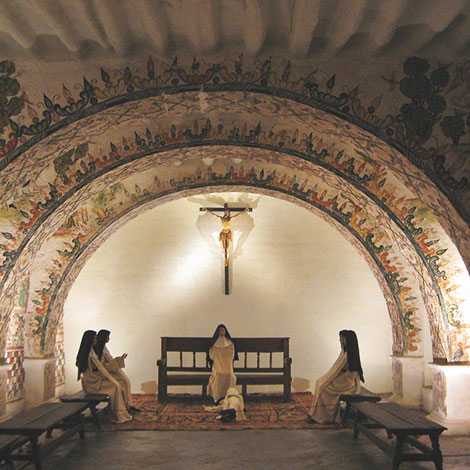
Leading southeast from the Plaza de Armas, Callejón Loreto separates La Compañía church from the tall, stone walls of the ancient Acclahuasi, or temple of the Sun Virgins, where the Sun Virgins used to make chicha beer for the Lord Inca. Today, the Acclahuasi building is occupied by the Convent of Santa Catalina, built in 1610, with its small but grand side entrance half a short block down Calle Santa Catalina Angosta just under thirty sisters still live and worship here in isolation.
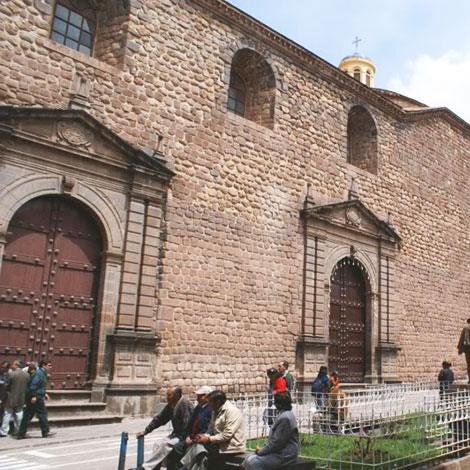
Inside the convent, the Museo de Arte y Monasterio de Santa Catalina features a splendid collection of paintings from the cusqueña school (see box below), as well as an impressive Renaissance altarpiece and several gigantic seventeenth-century tapestries depicting the union of Indian and Spanish cultures. The blending of cultures is a theme that runs throughout much of the museum´s fascinating artwork and is particularly evident in the Cusqueña paintings. Another common feature of much of the Cusqueña art here is the disproportionate, downward-looking, blood-covered head, body and limbs of the seventeenth-century depictions of Christ, which represent the suffering and low social position of the Andean Indians and originate from early colonial days when Indians were not permitted to look Spaniards in the eyes.
Another highlight of the museum, on the first floor at the top of the stairs, is a large fold-up box containing miniature three-dimensional religious and mythological images depicting everything from the Garden of Eden to an image of God with a red flowing cape and dark beard, and a white dove and angels playing drums, Andean flutes and pianos.
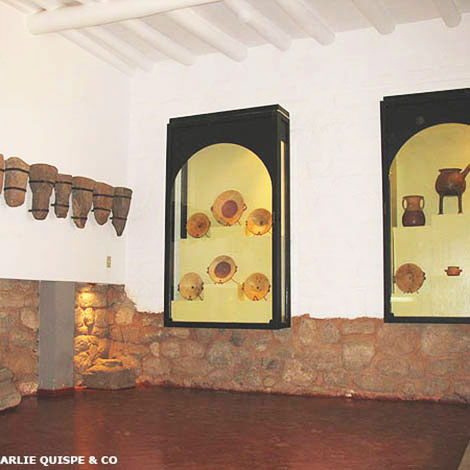
On the way from Santa Catlina towards Q´orikancha is the Museo y Sala Cultural at the Banco Wiese, where displays include historical documents and archeological and architectural exhibits; displays vary throughout the year. The focus is often on the restoration work of the Banco Wiese´s own premises, an attractive mansion that was once part of the Tupac Inca Yupanqui´s Pucamarca Palace.
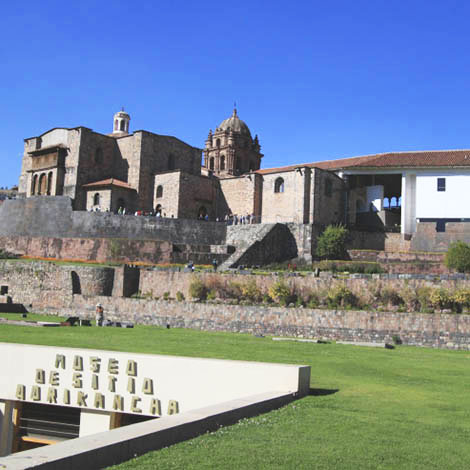
It´s a two-minute walk downhill from the complex reception to the underground museum entrance on block 3 of Avenida Sol.
Though one of Cusco´s smaller and less interesting museums, the Q´oricancha site museum, or Museo Arquelógico de Q´orikancha, does contain a number of interesting pieces. The first section is pre-Inca, mainly stone and ceramic exhibits; the second is Inca, with wooden, ceramic and some metallurgic crafts; in the third, archeological excavations are illustrated and interpreted; and the fourth houses a mummy and some bi-chrome ceramics of the Killki era (around 800 AD), which reflect the art of the pre-Inca Wari culture.
From the museum you can access the garden, which, though little more than a green, open, grassy space just outside the main walls of Q´orikancha, has a particularly beautiful pre-Inca spring and bath that dates to the Wari period, providing evidence of the importance of Q´orikancha before the Incas arrived on the Andean scene.
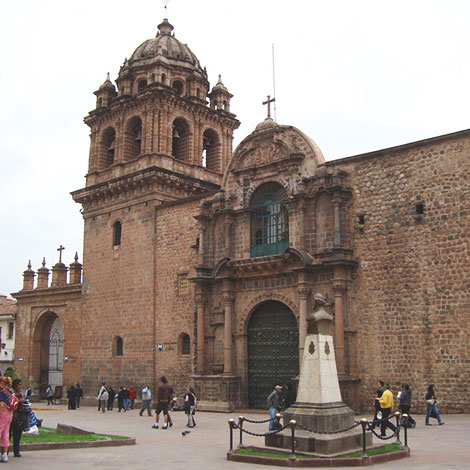
Ten minutes´ walk southwest of the Plaza de Armas is the Iglesia y Convento de la Merced, which sits peacefully amid the bustle of one of Cusco´s more interesting quarters. First raised with Pizarro´s financial assistance on top of the Inca site Limipata in 1536, it was rebuilt some 25 years after the 1650 earthquake in a rich combination of Baroque and Renaissance styles by such native artesans as Alonso Casay and Francisco Monya.
The facade is exceptionally ornate and the roof is endowed with an unusual Baroque spire, while inside there´s a beautiful star-studded ceiling and a huge silver cross, which is adored and kissed by a shuffling crowd. The monastery´s highlight, however, is a breathtaking 1720s monstrance standing a metre high and crafted by Spanish jeweler Juan de Olmos, who used over 600 pearls, more than 1500 diamonds and upwards of 22kg of solid gold. The monastery also possesses a fine collection of Cusqueña paintings, particularly in the cloisters and vestry, and an exceptionally gorgeous white-stone cloister.
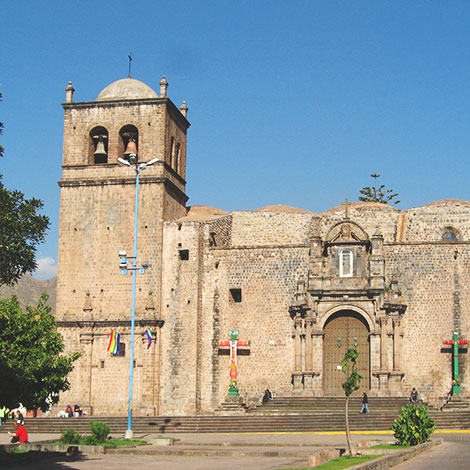
A block south of the Iglesia y Convento de la Merced is the Plaza San Francisco, frequently filled with food stalls that couldn´t be squeezed into the central market of along Calle Santa Clara. The square´s southwestern side is dominated by the simply adorned Museo y Convento de San Francisco, built between 1645 and 1652. Inside, two large cloisters boast some of the better colonial paintings by local masters such as Diego Quispe Tito, Marcos Zapata and Juan Espinosa de los Monteros, the latter being celebrated for his massive works on canvas, one or two of which are on display here.
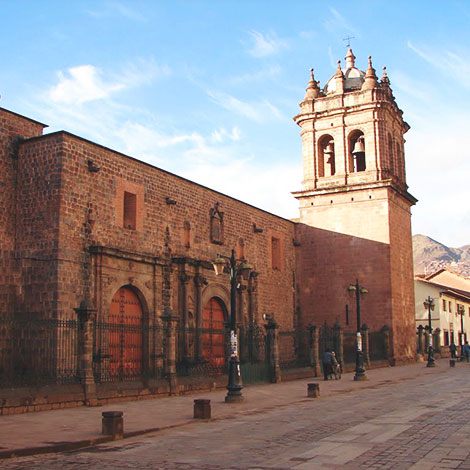
Passing under a crumbling archway to the left of the Museo y Convento de San Francisco, follow the flow of people along Calle Santa Clara towards the central market and you´ll come across the small but beautiful Iglesia de Santa Clara. Originally built around a single nave in 1558 by mestizo and indigenous craftsmen’s under the guidance of the architect Brother Manuel Pablo, and partly restored in 2005, it contains a gold-laminated altar, small mirrors covering most of the interior, and a few canvases. The outside walls, however, show more interesting details: finely cut Inca blocks support the upper, cruder stonework, and four andesite columns, much cracked over the centuries, complete the doorway. The belfry is so time-word that weeds and wildflowers have taken permanent root.
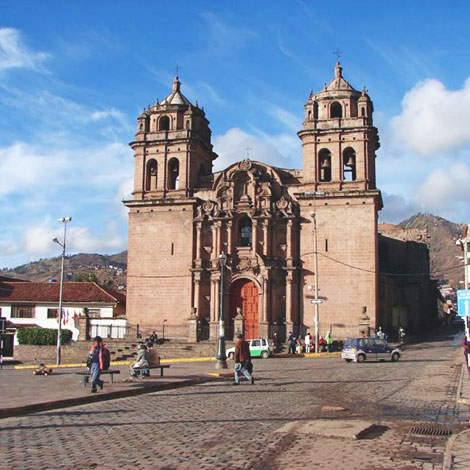
In the busy market area next to San Pedro train station stands the sixteenth-century colonial Iglesia de San Pedro, whose steps are normally crowded with Quechua market traders. The interior is decorated whit paintings, sculptures, gold leaf and wooden carvings, and an elaborate, carved pulpit. Relatively austere, with only a single nave, the church´s main claim to fame is that somewhere among the stones of its twin towers are ancient blocks dragged here from the small Inca fort of Picchu.
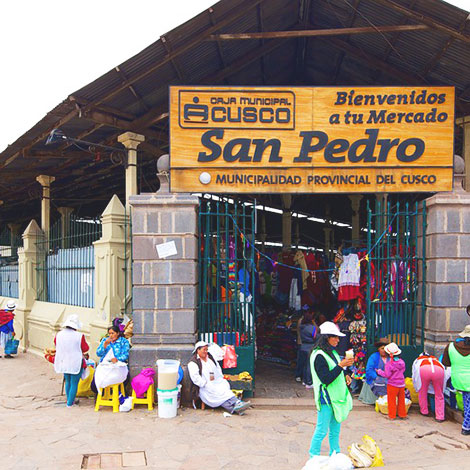
Stalls selling every imaginable practical item line the streets below the market building; inside the market you can find plentiful and exotic foodstuffs, as well as some herbalist kiosks that stock everything from lucky charms to jungle medicines. The food stalls at the bottom end of the indoor market offer some of the best and cheapest street meals in Peru, while the juice stalls at the top end serve up a delicious range of tropical smoothies.
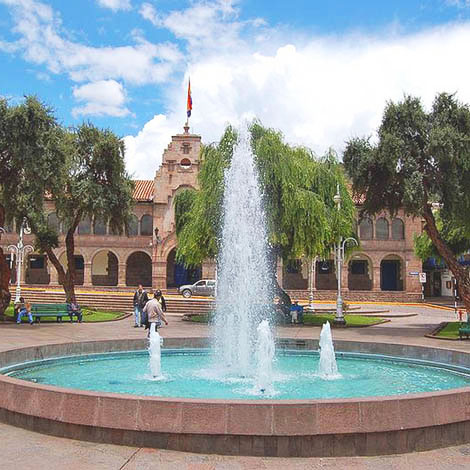
A block southwest of the Plaza de Armas, Plaza Regocijo, today a pleasant garden square sheltering a statue of Colonel Francisco Bolognesi, a famous Peruvian war martyr, was originally the Inca Cusipata, an area cleared for dancing and festivities beside the Incas´ ancient central plaza. Regocijo is dominated on its northwestern side by an attractively arched municipal building housing the Museo de Arte Contemporáneo, with a traditional Inca rainbow flag flying from its roof. Opposite this is the venerable old Hotel Cusco, under refurbishment but formerly the grand, state-run Hotel de Turistas, while on the southwest corner of the plaza lies an impressive mansion where more Inca stones mingle with colonial construction, home to the Museo Histórico Regional y Casa Garcilaso.
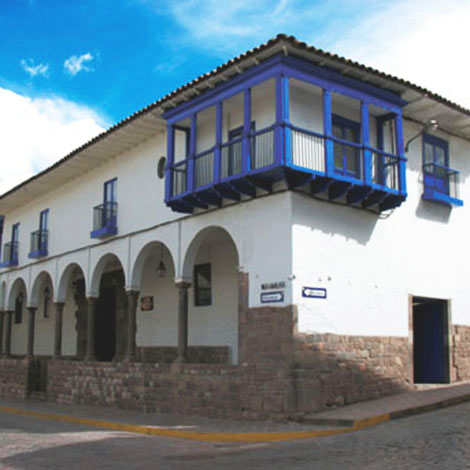
Once the residence of Garcilaso de la Vega, a prolific half-Inca (his mother may have been an Inca princess), half-Spanish poet and author, the mansion now known as the Museo Histórico Regional y Casa Garcilaso is home to significant regional archeological finds and much of Cusco´s historic art.
Fascinating pre-Inca ceramics from all over Peru are displayed here, as well as a Nasca mummy in a fetal position with typically long (1.5m) hair, embalming herbs and unctures, black ceramics with incised designs from the early Cusco culture (1000-200 BC) and a number of Inca artefacts such as bolas, maces, architects´ plumb-lines and square water-dishes used for finding horizontal levels on buildings. The museum also displays gold bracelets discovered at Machu Picchu in 1995, some gold and silver llama statuettes found in 1996 in the Plaza de Armas when reconstructing the central fountain, and golden pumas and figurines from Sacsayhuaman. From the colonial era there are some weavings, wooden quero drinking vessel and dancing masks.
The main exhibition rooms upstairs house mainly period furniture and a multitude of Cusqueña paintings, which cross the range from de rather dull (religious adorations) to the more spectacular (like the famous eighteenth-century Jacob´s Ladder). As you progress through the works you´ll notice the rapid intrusion of cannons, gunpowder and proliferation of violence appearing throughout the eighteenth century. Something which was reflected in Cusco art as a microcosm of what happened across the colonial world – emanating from Europe as part of the general march of technological “progress”.
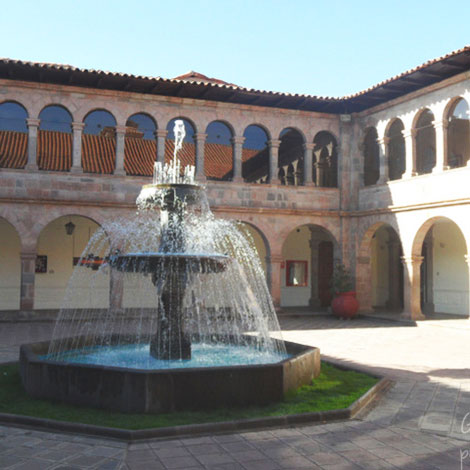
The Museo de Arte Contemporaneo, in the Municipality building on Plaza Regocijo, is a welcome and relatively new feature in Cusco, and an outlet for the many talented local artists. Sala 1 displays images of Cusco, mainly paintings but occasional photos of subjects like Inca dancers as well as abstract features and some sculpture. Sala 2 is dedicated to non-Cusco-inspired contemporary art, some of it very abstract but with exhibits changing quite regularly; the sala leads off into a large courtyard with a typically attractive colonial fountain; here you´ll find glass cases with dolls in traditional costumes, some regional variations of dance masks (from Paucartambo dance groups, houses more images of Cusco, both ancient and modern).
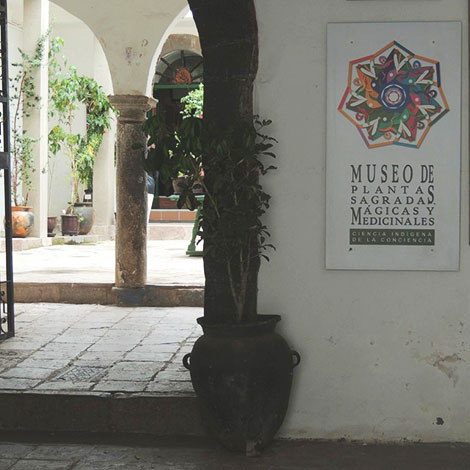
One of the newest and most thought provoking of Cusco´s museums, the Museo de Plantas Sagradas, Mágicas y Medicianes specializes in sacred, magical and medicinal plants used in the Andean and Amazon regions of the Americas. In many ways, these special plants are fundamental to the Andean-Amazon view of the world, and an understanding of their uses complements visits to archeological sites.
Since the Amazon is the richest source anywhere of medicinal and sacred plants, the museum – the only one of its kind in the world – illustrates a surprising range of subjects, many of which have changed the world over the last few centuries. Nine rooms, dedicated to different themes and some with vivid accompanying audio visuals, cover everything from the hallucinogenic teacher plants like the rainforest Ayahuasca vine and The coastal desert cactus San Pedro to the superfood quinoa and the all-important potato. there´s also a shop and a good little cafè, the latter based in the rear patio.
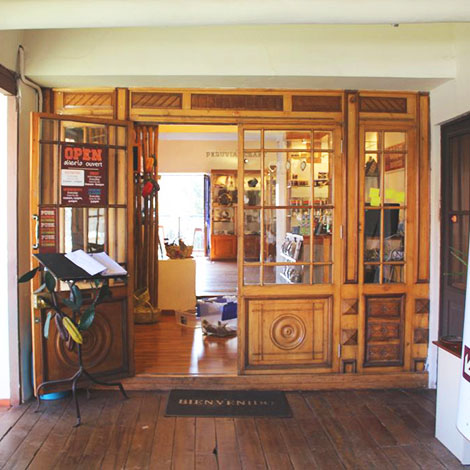
A few stps from Plaza Regocijo, the Chocomuseo has a range of interpretative displays on the history of cacao, starting with the Maya´s love of this plant in Central America.
The museum also organizes workshops on chocolate making and tours to cacao plantations in the Cusco region, and providers the opportunity to see artisanal chocolate production first-hand in the factory, from cacao bean to chocolate bar.
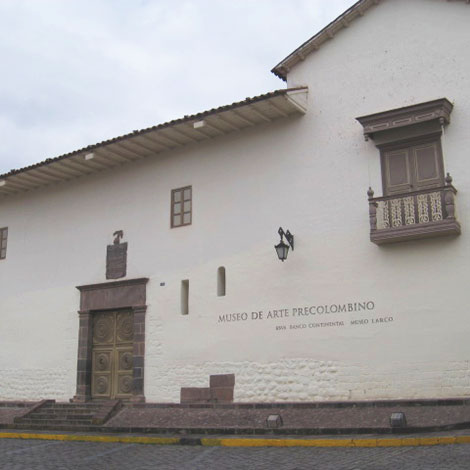
Calle Córdoba del Tucuman runs northeast from Plaza de Armas along the northern edge of the cathedral, past the Museo Inka and up to the small, quiet Plaza Nazarenas. The unmistakable Casa Cabrera, an eighteenth-century mansion built on top of a ninth-century temple pyramid, has been transformed into de Museo de Arte Precolombino at the top end of this small square. The recently remodeled museum boasts many masterpieces dating from 1250 BC to 1532 AD, including gold and other precious metals and jewellery, displayed in chronological order. Some of the new exhibits, the Larco Collection, have come from de Larco Herrera Museum in Lima. There´s an interesting exhibit exploring the history of urban architecture in this Inca imperial capital city. Frequent temporary exhibitions are also held here.
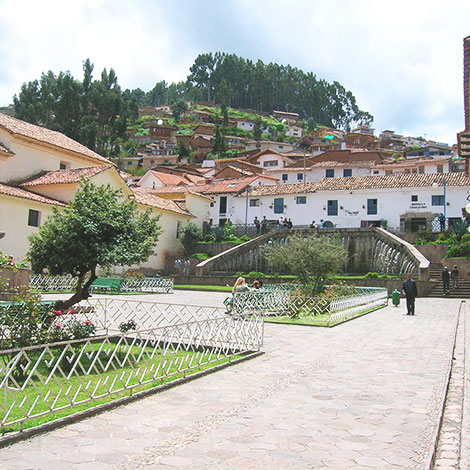
Originally known as T´oqokachi (“salty hole”), the San Blas barrio was the first parish to be established by the Spanish in Cusco and one of first administrative sectors in the Inca capital. After the Conquest it became the residence for many defeated Inca leaders. It rapidly grew into one of the more attractive districts in the city, reflecting strong mestizo and colonial influences in its architecture and high-quality artesanía – even today it´s known as the barrio de los artesanos (artesans´ quarter). Hit hard by the 1950 earthquake, it has been substantially restored, and in 1993 was given a major face-lift that returned it to its former glory. The process of rebuilding continues, with many old houses being converted to hostels, shops and restaurants.
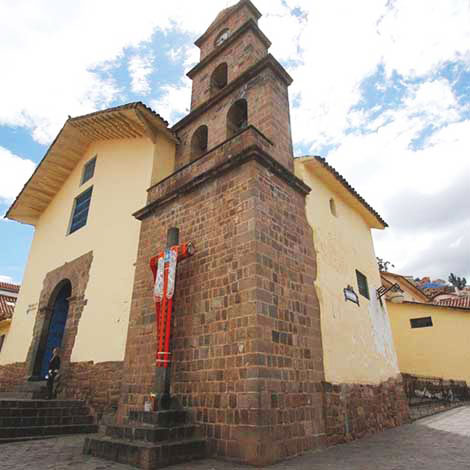
From Choquechaca, turn left into. Cuesta de San Blas and after one and a half blocks you´ll come to the tiny chapel Templo de San Blas. The highlight here is an incredibly intricate pulpit, carved from a block of cedar wood in a complicated Churrigueresque style; its detail includes a cherub, a sun disc, faces and bunches of grapes believed to have been carved by native craftsman Tomas Tuyro Tupa in the seventeenth century.
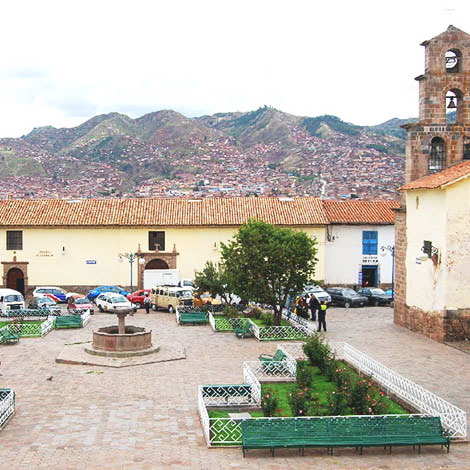
At the barrio´s center, on the southeast side of the Iglesia San Blas, lies the Plazoleta San Blas, with 49 gargoyles ser on a fountain that´s laid our in the form of a chakana, or Inca cross, with four corners and a hole at its center. On the plazoleta, the Museo Taller Hilario Mendivil (Mon-Sat 10am-6pm) contains a number of Cusqueña paintings, as well as some interesting murals and religious icons.
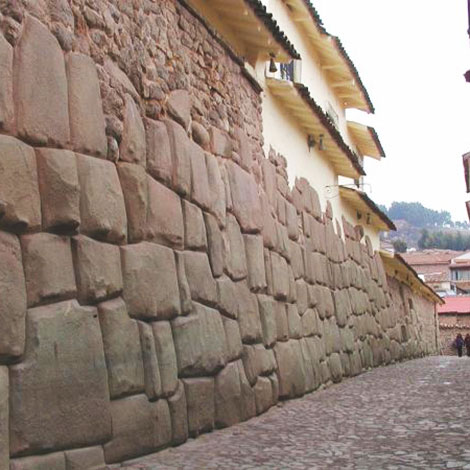
Go down the Cuesta de San Blas and continue over the intersection with Choquechaca, then head straight on until you come to the narrow alley.
One of the main streets in ancient Cusco. Hathun Rumiyoq provides classic examples of superb Inca stonework: the large cut boulders on the museum side, about halfway along, boast one that has twelve angles in its jointing with the stones around it. Not just earthquake-resistant, it is both a highly photographed ruin and a work of art in its own right.
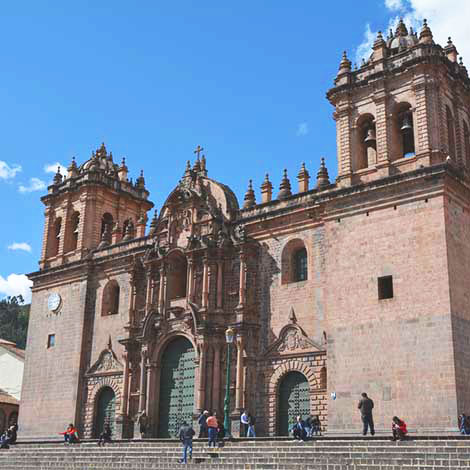
The cathedral was constructed over the old temple of Wiracocha. On the 8th January 1536 the papal bull elevated its status from church to Cathedral. Initially it was of simple and poor quality construction but that was changed in 1560 when the remodeling of the great and gorgeous temple started and lasted for 94 years. Until 1654 the Basque architect Manuel de Veramendi was in charge, but it was his successor Diego Arias de la Cerda who finished the construction and who presumably made the beautiful carvings of the who presumably made the beautiful carvings of the wooden choir stalls.
In the temple there are there three significant items to be appreciated: the Main Altar, covered in layers of beaten silver, the gold en Tabernacle studded with pearls, emeralds, diamonds and a dragon made of one piece of emerald and finally the Choir´s double row stalls of very fine and delicate carvings.
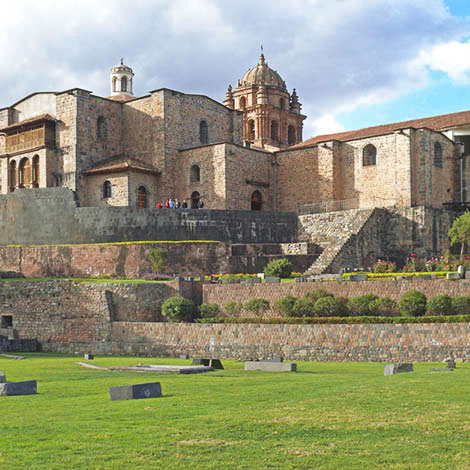
This was the main temple of the Incas and its Quechua name means “chamber of gold”. It was built by Manco Capac around the year 1250 AD, with Wiracocha the principal deity worshiped there. Later, around the year 1440, Inca Pachacutec renovated the temple and transformed it into a temple dedicated to the sun god, who had become the highest god of the Incas. A chamber of this new temple was dedicated to the worship of the sun, while other rooms were reserved for the worship of the sun, while other rooms were reserved for the worship of the moon goddess (Quilla), the stars, thunder, etc.
The Spanish wrote of how they had the opportunity to see the temple before it was destroyed and sacked, and they describe it as something wonderful the like of which they had never seen before, even in Spain, with its walls covered with gold and precious stones and decorated with countless objects made from gold and silver, and cloaks made from multicolored feathers covering the ceiling.
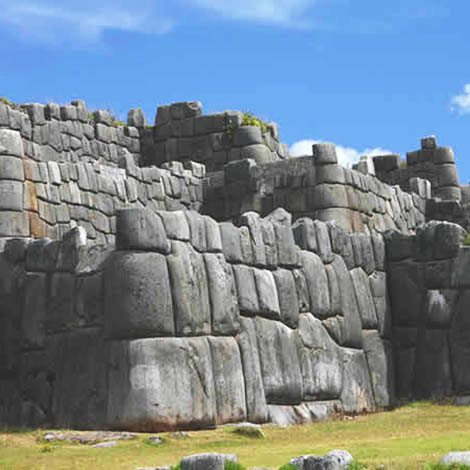
The walled complex of SACSAYHUAMAN forms the head of Cusco´s ethereal puma, whose fierce-looking teeth point away from the city. The name Sacsayhuman is of disputed origin, with different groups holding that it means either “satiated falcon”, “speckled head” or “city of stone”.
Once the site of a bloody battle between Inca leaders and the Spanish conquistadores, today the most dramatic event to take place at Sacsayhuaman is the colourful – if overly commercial – Inti Raymi festival in June. However, throughout the year, you may stumble across various sun ceremonies being performed here by local mystics.
It was the Emperor Pachacuti who began work on Sacsayhuaman in the 1440s, although it took nearly a century of creative work no finish it. Various types of rock were used, including enormous diorite blocks from nearby for the outer walls, Yucay limestone from more than 15km away for the foundations, and dark andesite, some of it from over 30km away at Rumicolca, for the inner building and towers. First, boulders were split by boring holes with stone or cane rods and wet sand; next, wooden wedges were inserted into these holes and saturated to crack the rocks into more manageable sized; finally the blocks were shifted into place with levers. With only natural fibre ropes, stone hammers and bronze chisels, it must have been an enormous task.
During the fateful battle of 1536, Juan Pizarro, Francisco´s son, was killed as he charged the main gate in a surprise assault, and a leading Inca nobleman, armed with a Spanish sword and shield, caused havoc by repulsing every enemy who tried to scale Muyu Marca, the last tower left in Inca hands. Having sworn to fight to the death, he leapt from the top when defeat seemed inevitable, rather than accept humiliation and dishonor. After the battle the esplanade was covered in native corpses: food for vultures and inspiration for the Cusco coat of arms, which, since 1540, has been bordered by eight condors “in memory of the fact that when the castle was taken these birds descended to eat the natives who had died in it”. The conquistadors wasted little time in dismantling most of the inner structures of the fortress, using the stones to build Spanish Cusco.
Protected by such a steep approach from de town, the fortress only needed defensive walls on one side. Nevertheless, this “wall” is one of South America´s archeological treasures, actually formed by three massive, parallel stone ramparts zigzagging together for some 600 meters across the plateau just over the other side of the mountaintop from Cusco city and the valley below. These zigzag walls, incorporating the most monumental and megalithic stones used in ancient Peru, form the boundary of what was originally designed as a “spiritual distillation” of the ancient city below, with many sectors named after areas of imperial Cusco.
Little of the inner structures remain, yet these enormous ramparts stand twenty metres high, quite undamaged by past battles, earthquakes and the passage or time. The strength of the mortar less stonework – one block weighs more than three hundred tons – is matched by the brilliance of its design: the zigzags, casting shadows in the afternoon sun, not only look like jagged cats´ teeth, but also seem to have been cleverly designed to expose the flanks of any attacking force. Recently, however, many sacred and ritual objects excavated here have caused archeologists to consider Sacsayhuaman as more of a ceremonial center than a fortress, the distinctive, jagged form of these outer walls possibly symbolizing the important deity of lightning.
Originally, the inner “fort” was covered in buildings, a maze of tiny streets dominated by three major towers. The tower of Muyu Marca, whose foundations can still be seen clearly, was round, over 30m tall and with three concentric circles of wall, the outer one roughly 24m in diameter. An imperial residence, it apparently had lavish inner chambers and a constant supply of fresh water, carried up through subterranean channels. The other two towers – Salla Marca and Paunca Marca – had rectangular bases about 20m long and were essentially warriors´ barracks, and all three were painted in vivid colours, had thatched roofs and were interconnected by underground passages: in its entirety, the inner fortress could have housed as many as the thousand people under siege. At the rear of this sector, looking directly down into Cusco and the valley was a temple dedicated to the sun, reckoned by some to be the most important shrine in the entire Inca Empire and the most sacred sector of Sacsayhuaman. Excavation of these sites continues, but it´s still very difficult to make our anything but the circular tower base.
In front of the main defensive walls, a flat expanse of grassy ground – the esplanade – divides the fortress from a large outcrop of volcanic diorite. Intricately carved in places, and scarred with deep glacial striations, this rock, called the Rodadero (“sliding place”), was the site of an Inca throne. Originally there was a stone parapet surrounding this important huaca, and it´s thought that the emperor would have been processions, wrestling matches and running competitions. On the far side of this huge outcrop are larger recreational sliding areas, smoothed by the many centuries of Inca – and now tourists´ - backsides.
From here you can see another large circular space called Qoccha Chincanas, possibly an Inca graveyard, and on its far side the sacred spring of Calispucyo, where ceremonies to initiate boys into manhood were held. Excavations here have uncovered crystals and shells (some of the latter all the way from Ecuador), a sing usually associated with water veneration.
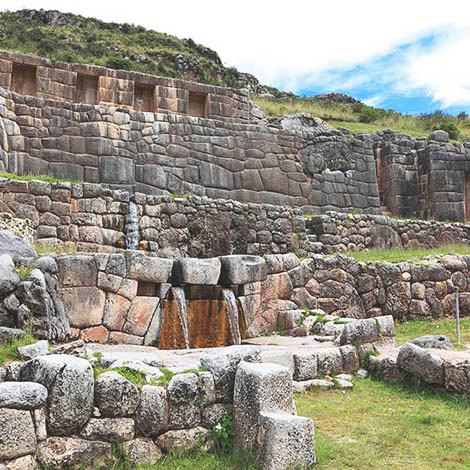
The large limestone outcrop of QENKO was another important Inca huaca. This great stone, carved with a complex pattern of steps, seats, geometric reliefs and puma designs, illustrate the critical role of the Rock Cult in the realm of Inca cosmological beliefs (the surrounding foothills are dotted with carved rocks and elaborate stone terraces). The name of this huaca derives from the Quechua word quenqo meaning “labyrinth” or “zigzag”, and refers to the patterns laboriously carved into the upper, western edge of the stone. At an annual festival priests would pour sacrificial llama blood into a bowl at the serpent – like top of the main zigzag channel; if it flowed our through the left-hand bifurcation, this was a bad omen for the fertility of the year to come. If, on the other hand, it continued the full length of the channel and poured onto the rocks below, this was a good omen.
The stone may also be associated with solstice and equinox ceremonies, fertility rites and even marriage rituals (there´s a twin seat close to the top of Qenko which looks very much like a lovers´ kissing bench). Right on top of the stone two prominent round nodules are carved onto a plinth. These appear to be mini versions of intihuatanas (“hitching posts” of the sun), found at many Inca sacred sites – local guides claim that on the summer solstice, at around 8am, the nodules´ shadow looks like a puma´s face and a condor with wings outstretched at the same time. Along with the serpent-like divinatory channels, this would complete the three main layers of the Inca cosmos: sky (condor), earth (puma) and the underworld (snake).
Beneath Qenko are several tunnels and caves, replete with impressive carved niches and steps, which may have been places for spiritual contemplation and communication with the forces of life and earth. it´s been suggested that some of the niches may have been where the mummies of lesser nobles were kept.
At the top end of the huaca, behind the channeled section, the Incas constructed an impressive, if relative small, semicircular amphitheatre with nineteen vaulted niches (probably seats for priests or nobles) facing in towards the impressive limestone. At the heart of the amphitheatre rises a natural standing stone, which from some angles looks like a frog (representative of the life-giving and cleansing power of rain) and from others like a puma, both creatures of great importance to pre-Conquest Peru.
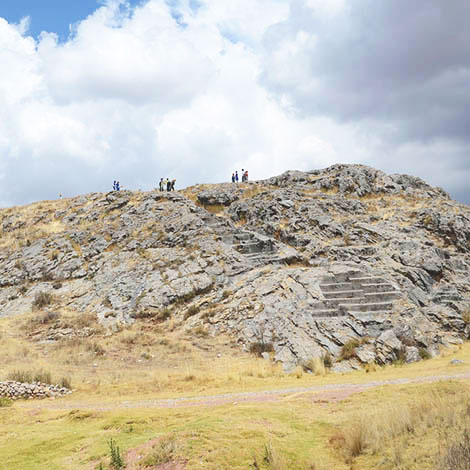
Yet another sacred huaca, though off the beaten track, the large rock outcrop of SALAPUNCO – also known as the Temple of the Moon and locally called Laqo – contains a number of small caves where the rock has been painstakingly carved. At the time of writing an archeological dig was taking place here. You can see worn relief work with puma and snake motifs on the external rock faces, while the caves hold altar-like platforms and niches that were probably used to house mummies. The largest of the caves is thought to have been a venue for ceremonies celebrating the full moon, as it sometimes is today, when eerie silver light filters into the usually dark interior. Close to Salapunco there´s another site, K´usilluchayoq, which has some more rock carvings.
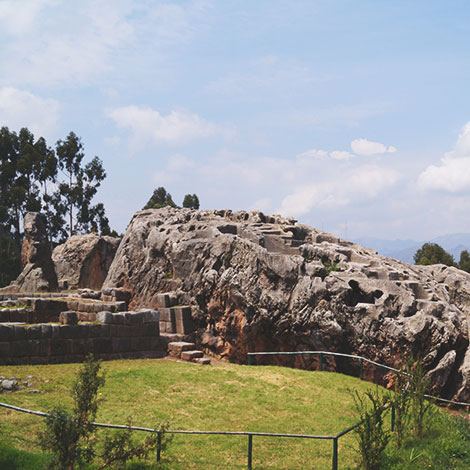
An important but little – visited Inca site, CHACAN lies about 5km from Sacsayhuaman on the opposite side of the fortress from Qenqo and the road to Tambo Machay. Chacan itself was a revered spring, and you can see a fair amount of terracing, some carved rocks and a few buildings in the immediate vicinity; like Tambo Machay, it demonstrate the importance of water as an ever-changing, life-giving force in Inca religion. A pleasant but more difficult walk leads down the Tica Tica stream to Quispe Huara (“crystal loincloth”), where a two – to three-metre-high pyramid shape has been cut into the rock. Close by are some Inca stone walls, probable once part of a ritual bathing location.
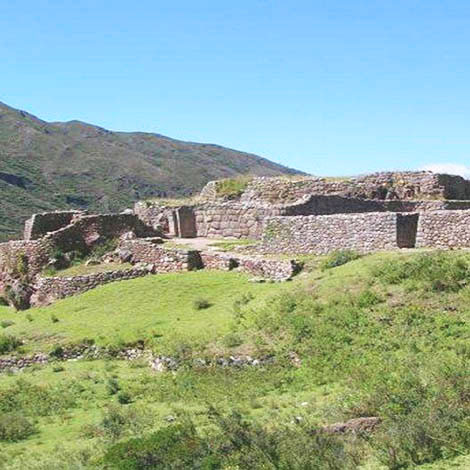
A relatively small ruin, PUCA PUCARA, meaning “Red Fort”, is around 11 km from the city, impressively situated overlooking the Cusco Valley, right beside the main Cusco – Pisac road. A good example of how the Incas combined recreation and spirituality along with social control and military defence, Puca Pucara is well worth the trip.
Although in many ways reminiscent of a small European castle, with a commanding esplanade topping its semicircle of protective wall, Puca Pucara is more likely to have been a hunting lodge for the emperor than simply a defensive position. Thought to have been built by the Emperor Pachacutec, it commands views towards glaciers to south of the Cusco Valley. Easily defended on three sides, it could have contained only a relatively small garrison and may have been a guard post between Cusco and the Sacred Valley, which lies to the northeast; it could also have had a sacred function, as it has excellent views towards the apu of Ausangate and is ideally placed to keep tabs on the flow of people and produce from the Sacred Valley to Cusco.
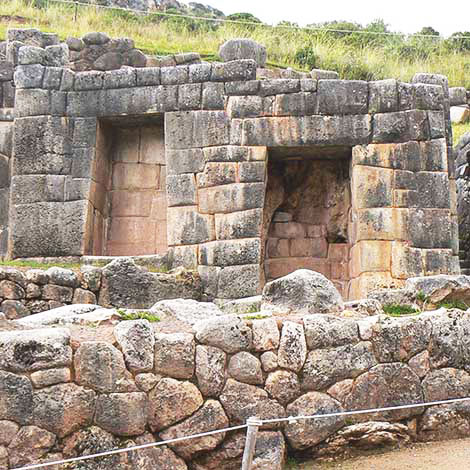
One of the more impressive Inca Baths, TAMBO MACHAY, or Temple of the Waters, was evidently a place for ritual as well as physical cleansing and purification. Situated at a spring near the Incas´ hunting lodge, its main construction lies in a sheltered gully where some superb Inca masonry again emphasized their fascination with water.
The ruins basically consist of three tiered platforms. The top one holds four trapezoidal niches that may have been used as seats; on the next level, underground water emerges directly from a hole at the base of the stonework, and from here cascades down to the bottom platform, creating a cold shower just high enough for an Inca to stand under. On this platform the spring water splits into two channels, both pouring the last meter down to ground level. Clearly a site for ritual bathing, the quality of the stonework suggests that its use was restricted to the higher nobility, who perhaps used the baths only on ceremonial occasions.
About 1km further up the gully, you´ll come to a small grotto where there´s a pool large enough for bathing, even in the dry season. While it shows no sign of Inca stonework, the hills to either side of the stream are dotted with stone terraces and caves, one or two of which still to either side of the stream are dotted with stone terraces and caves, one or two of which still have remnants of walls at their entrance. In Inca, machay means “cave”, suggesting that these were an important local feature, perhaps as sources of water for Tambo Machay and Puca Pucara.
Spanish is the official language of Cusco. Quechua and various highland and Amazonian languages are also recognized as co-official languages.
Most tourism industry workers speak some English. Taxi drivers and small shop owners are less likely to speak English. Some agencies in Cusco also cater to speakers of French, German, Dutch and other European languages, as well as Japanese and Chinese.
For travel to Cusco, a small Spanish vocabulary (greetings, numbers and question words) can be helpful for basic interactions.
Greetings are a simple way to show politeness when interacting with people you meet during your trip to Peru.
In Cusco, you’ll see people wearing a mix of Western clothes and Andean outfits, although the former is more common. Most people in traditional dress come from the villages around Cusco either to participate in the tourist industry or handle personal business.
Typical Andean dress consists of polleras (multilayered skirts) and hats for women, woven ponchos and chullos (wool hats with earflaps) for men. Occasionally, you’ll also see children in typical dress, sometimes with tethered llamas in tow or with baby lambs in their arms, offering to pose for photos in exchange for a few soles.
On Sundays, Cusco residents dress in tailored business suits to go to Mass or to participate in processions around the Plaza de Armas.
Travelers also exhibit a distinguishable type of dress. Trekking boots, zippered hiking pants, and fleece tops are common, while backpackers prefer colorful happy pants, chullos, and sweaters with llama motifs.
Cusco has been a Catholic city since the 16th century Spanish Conquest. There are 18 churches within the historic center alone. Protestant faiths are also practiced, but these churches are commonly located in the newer residential areas.
Cusco’s major religious festivals are perfect examples of the cultural syncretism that resulted from the post-Conquest evangelization of indigenous populations. See the list of Cusco city festivals below.
Pre-Columbian beliefs are also evident the reverence Cusqueños display for the apus (mountains) and huacas (temples) and other Inca ruins.
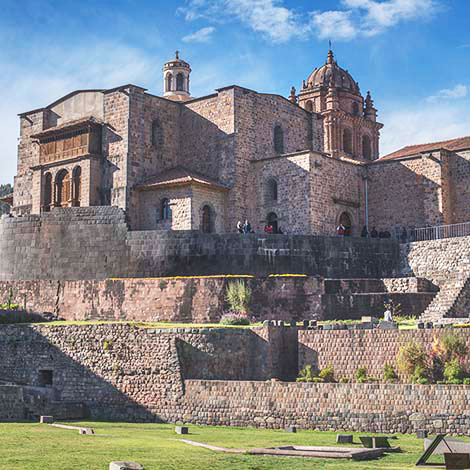
For travelers short on time, a guided Cusco tour is the best way to take in the highlights of South America’s oldest continuously inhabited city. Group tours typically begin in the afternoon, visiting the Qorikancha (Temple of the Sun) and the Cathedral. These two sites provide an introduction to the drama of Cusco’s history through its architecture, from the rise of the Inca Empire to its defeat by Spanish conquistadors and the building of a colonial city atop the ruins. The second part of the tour continues to archaeological sites in the hills above Cusco, including the monolithic ruins of Sacsayhuaman as well as Qenko, Puka Pukara, Tambomachay, which will together give you an idea of the scale of Inca building projects. Private tours are a better option for travelers with specific interests such as religious art or archeology.
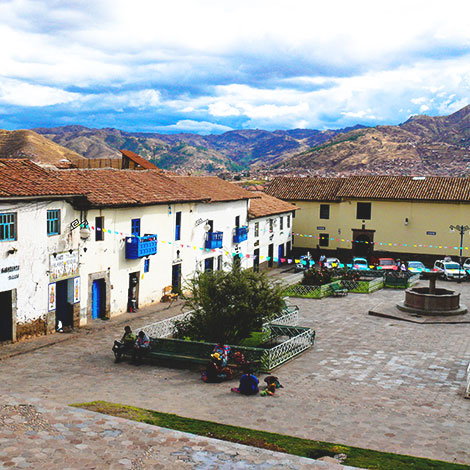
4 blocks from the Main Square, this is one of the most picturesque areas in all of Cusco. It is also called T’oqokachi (salt hole) and is characterized by narrow, steep streets and beautiful colonial houses. It is also known as the artisan neighborhood of Cusco.
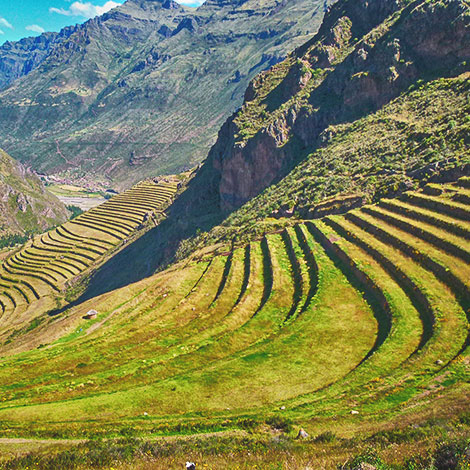
In Inca times, the Sacred Valley was reserved for specialized agriculture and the Inca kings’ private estates. Today, finely sculpted terraces and enigmatic ruins dot this narrow valley famous for its singular beauty. The towns of Pisac and Ollantaytambo are the principal stops, though travelers with more time on their hands will find plenty more to see and do. It’s possible to visit the Sacred Valley on a day tour from Cusco, which is convenient for travelers who need to return to Cusco to acclimate for a trek or for an early flight out. If time allows, we highly recommend spending a night or two in the Sacred Valley, away from the bustle of Cusco and Machu Picchu.
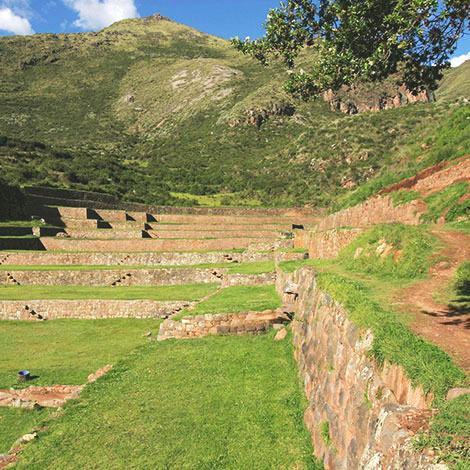
Travelers can explore the amazing hydraulic architecture in Tipon, pre-Incan structures in Pikillacta and the beautiful artworks of the Escuela Cusqueña in Andahuaylillas. Additionally, you can explore the capital of bread, Oropesa, Lucre, Huacarpay, Raqchi and other places.
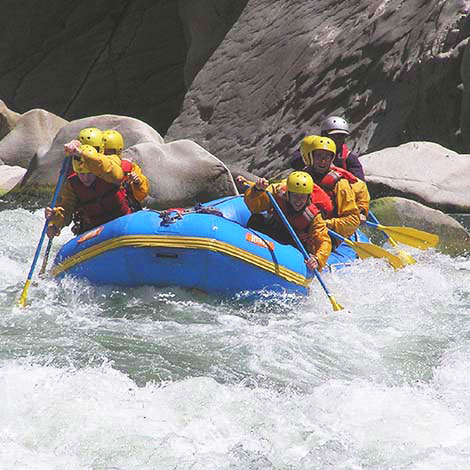
Get off the tour bus and inject some real adventure into your exploration of Cusco’s ruins with a mountain bike or horseback riding tour. You can ride between Sacsayhuaman and Tambomachay, stopping by smaller sites in between while getting views of the city and the surrounding landscape. It’s the perfect option to get away from the crowds while in Cusco. The Sacred Valley also has rafting, rock climbing, and ATV tours available.
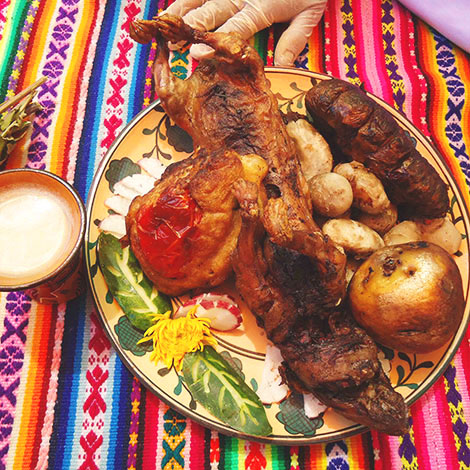
Local cuisine Cusco prides itself on its traditional dishes, which have evolved this century into a novo andino cuisine fusing the best ingredients of the Andes with exquisite Mediterranean and even Argentinian influences. Generally speaking, trout is plentiful, reasonably priced, and often excellent, and roast guinea pig (cuy) can usually be ordered but pizza seems to lead in the popularity stakes. Self-catering The central market by San Pedro train station sells a wonderful variety of meats, tropical and imported fruits, local vegetables, Andean Cheeses, and other basics. The market also has a wide range of daytime hot-food stalls where you can get superb, freshly squeezed juices.
Where to eat Eating out in Cusco is enjoyable. Restaurants range from cheap-and-cheerful pizza joints to exceptionally fine gourmet establishments. Many of the best restaurants and bars are within a block or two of the Plaza de Armas and uphill towards San Blas; the more central places serve anything from a toasted cheese sandwich to authentic Andean or criolla dishes. Quintas – basic local eating houses – serves mostly traditional Peruvian food, full of spice and character. it´s difficult, if not impossible, to categorize some of the establishments in Cusco as distinctly cafés, restaurants, or bars since many fulfil all three functions, occasionally simultaneously, sometimes varying between different hours of the day. The Muse, for instance, is a café-bar in the daytime and a nightlife venue from about 9:30 pm, particularly at weekends.
Portal de Carnes 216, Plaza de Armas. Located upstairs, the Bagdad Café is a popular spot, not least because it has tables on a colonial balcony overlooking the plaza. Serves good pizzas, breakfasts, sandwiches, some pasta dishes, and cool drinks.
Cuesta San Blas 579. One of the best in Cusco, this exceptional bakery has a huge array of sweet and savory homemade pastries and fine cakes.
C Plateros 358a, 2nd floor. This stylish and very well-appointed restaurant produces the best Italian cuisine in the city. Excellent service in a refined ambience, with black-and-white classic photos decorating the walls; and main dishes from around S/30.
Plaza San Francisco 134. Good French bakery – ideal for croissants, French bread, and, best of all, delicious cream pastries.
Av. Sol, opposite and a little uphill from the post office. Excellent coffee and cakes are served here all day in a pleasant, Euro-deli atmosphere. Also good for breakfast sandwiches and quiche.
Plazoleta Nazarenas 221. A gay-friendly restaurant with games suspended on stools from the ceiling and fake leopard-skin trunks. There´s also a resident DJ who plays vibrant trip-hop and trance. The decor is an experience in its own right: arty, wicked, and inspired, while the garden art is as good as many of Cusco´s art museums – and much more twenty-first-century. The food and cocktails are equally exquisite. Try the Andean tenderloin steak with port and balsamic topping (S/35), the Andean ravioli stuffed with local sweet potato, the wild mushrooms, or the warm salad. Book in advance.
Santa Catalina Angosta 135. This brilliantly run restaurant serves superba innovative dishes, both novo andino and Mediterranean, using as many organic and Green ingredients as possible. Highly recommended and pretty reasonably priced, with main dishes starting around S/ 25. Reservations are advised.
Santa Catalina Angosta 135. Based in a large space below Greens Restaurant, this place nevertheless fill up quickly in the evenings because of its reputation for good service and quality pizza. Also serves fine Peruvian dishes like aji de gallina, lomo saltado and locro de zapallo from around S/. 28.
Corner of Choquechaca and Cuesta San Blas. A popular gringo place, this pleasant café serves very creative all-day breakfasts, burgers, pancakes, and a whole host of other very tasty plates. Great coffee and very good service. When busy you may have to queue.
Tandapata 909. Cusco main curry house, this fine restaurant with a unique ambiance serves everything from crispy tandoori guinea pig to alpaca curries. Other dishes include bhajis, samosas, chicken korma (S/28), tofu vindaloo, and bean rogan josh.
Cuesta San Blas 571. A cozy and homely gay-friendly restaurant with wacky decor, serving some of the best novo andino and Amazonian cuisines you´ll find anywhere; try the yuquitas (fried slices of manioc) stuffed with chimbivalcano (from chimbivalca) cheese, the vegetarian curry or the alpaca mignon a la parmesana. Main dishes start at around S/ 28. Best in evenings (book in advance), but serves a full menu during the day.
C San Juan de Dios 250, inside the courtyard on the 2nd floor. Located inside the beautifully restored Casa Qoriq´ente, a late colonial, early republican mansion with a stunning courtyard and working central fountain, Mammacha serves quality lunchtime menus and fine evening gourmet meals: a fusion of pastas with traditional Peruvian cuisine in a interior or on the terrace tables; main dishes from around S/ 28.
C Triunfo 338, 2nd floor. During the day this place serves excellent coffee, snacks such as apple pie and cheesecake, and full meals, including all-day breakfasts and excellent soups (like pumpkin and leek and potato, both ideal for adjusting to the altitude). The main room is a large and comfortable space, with a stage for live music in the evenings. Out back, there´s a more formal restaurant room with a wonderful stone fireplace, ideal for groups.
Tambopata 917, San Blas. A great little place for snacking at any time of day, this sister café to the muse (above) has good coffee, fresh juices, and tasty food for meat eaters and vegetarians. It serves breakfast all day and has a large screen for sports and movies, the latter shown daily from around 4 p.m. In the evenings there´s often live music. Wi-fi available.
Plaza San Blas 120. A great, inexpensive restaurant set around an attractive courtyard, serving a range of hard-to-find Andean dishes (from around S/26), from goulash de alpaca to the highly nutritious sopa de quinoa, and good wines, both Peruvian and Chilean. Often has wonderful Andean live harp music. Reservations recommended.
C Plateros 309. Popular with tourists, this pleasant restaurant offers inexpensive set menus, fine salads, and well-prepared Peruvian cuisine (main dishes from S/ 24). There´s occasional music in the evenings.
C Choquechaca 384. One of the very best and most traditional local eating houses, in a backstreet a few blocks above the Plaza de Armas. Plays fine criolla music and is good for cuy chactado (guinea pig fried with potatoes, tamales, and rocoto, a pepper-like vegetable that is occasionally spicy).
Santa Catalina Ancha 384. A simple vegetarian café that serves set menus as well as incredibly good value meals a la carte (from around S/ 15), including delicious omelets, soups, and salads, as well as health drinks.
C Saphy 584. The original vegetarian eating house in Cusco. You can enjoy simple, healthy food – fruit-and-yogurt breakfast and excellent-value set lunches – under the jungle-style tortora reed ceiling amid bamboo posts, with a soundtrack of new-age spiritual ambient tunes. Based in two ample spaces, though the tables are a bit tight.
Santa Catalina 360. Find good beer and even better full meals at this swish Irish pub and restaurant: the beef steak (S/30 - plus) is among the best in Peru. In the evening, there´s a great atmosphere, and major sports games are shown on a big screen.
C Mantas 105, corner of Av Sol. This restaurant serves reasonably good quality Italian cuisine, especially pasta dishes. Main meals start at S/24 and there´s a fine selection of good South American and European wines. Service is fast and the place is popular with both tourists and locals.
Portal de Comercio 177 Plaza de Armas. A welcoming café warmed by an open log fire and serving a mix of local and international food. An internet section is partitioned off from the café itself, with views over the plaza, a notice board, and games.
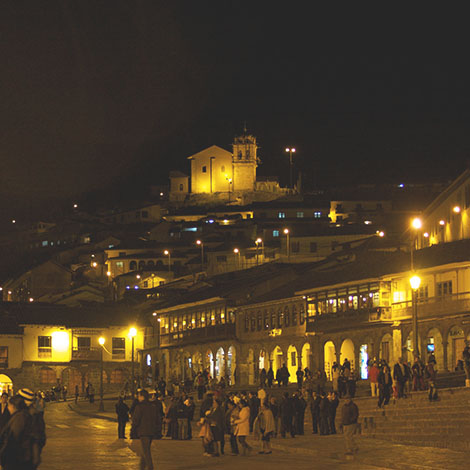
Apart from Lima, no Peruvian town has as varied a nightlife as Cusco. The Plaza de Armas is a hive of activity until the early hours, even during the week. Most venues in the city are simply bars with a dance floor and sometimes a stage, but their styles vary enormously, from Andean folk spots with panpipe music to reggae or jazz joints, as well as more conventional dubs. Most places are within staggering distance of each other, and sampling them is an important part of any stay in Cusco. Most really get going between 10 and 11 p.m., then keep on going until 2 or 3 am.
C Triunfo 350, 2nd floor. One of the hubs of Cusco's nightlife, this classic dive has the feel of a London pub, with good music, football scarves adorning the walls, pool tables, and decent beers. Wi-fi and tasty food are available and there are then English-language newspapers and magazines - not surprisingly since It's owned by the British consult.
Tecsecocha 2. An atmospheric bar justly famous for its that and cocktails. It's best in the evenings when you can warm up by the fireplace, and there are comfortable seats, sofas and swings, games, books, sports TV, Wi-fi and hookahs.
Tandapata 100, San Blas. This bar and café is small and nearly always busy with a very international mix of musicians and drinkers; there´s live music at weekends and sometimes during the week. The music lounge and bar area downstairs can get a bit cramped, but there are restaurant tables upstairs.
C Triunfo 338, 2nd floor. This popular café and restaurant is also one of the most vibrant live music venues in town.
Santa Catalina 116. Just off the Plaza de Armas, with great views over the square, Norton Rats is best known as a bar, serving special jungle cocktails and a couple of decent English ales in its spacious interior. It plays rock, blues, jazz, and Latin music, and has a pool table and dartboard, plus satellite TV for sports. There´s also a café menu of grills and sandwiches.
C Triunfo 124. Much like a British pub, though its wood-paneled walls are garlanded with Irish artifacts and a working model train, which circulates the room continuously. The atmosphere is pleasant and generally very busy, particularly at weekends, when they often have live Irish music and the Guinness is flowing. There´s a sports screen too.
Tecsecocha 436. Billing itself as “the original wine and couch bar”, Los Perros is a trendy hangout where travelers snack, drink, and play board games, or read from the wide-ranging library of books and magazines (books can be exchanged – give two, take one). It serves some of the biggest hamburgers on the planet, plus there´s a notice board, good music, and often live modern jazz at weekends.
Santa Catalina 360. A capacious Irish pub and a great restaurant with a range of beers, Guinness included. There is great live music on thus and Fri, plus a popular Friday evening “boat race” drinking competition; satellite tv for sports.
Tecsecocha 415. One of the newest Brit-style lounge bars with wi-fi, a good atmosphere, and great food. There is usually live music Thurs-Sat, and there´s a good vibe even when full.
Portal Harinas 109, 3rd floor, Plaza de Armas. A good, buzzing dance bar with a small entrance fee, playing reggae on Fry and Sat, electronica on Sun, and mixed disco and hip-hop during the week. It regularly presents live shows with fire-dancing, African rhythm, and Latin and Brazilian artists, plus occasional dance classes in salsa and samba. Other pluses are the great view over the Plaza and the good food.
Santa Catalina Angosta 110. Near the Plaza de Armas, el Muki has been pumping out pop every night for over twenty years. With its atmosphere of catacomb-like dance floors, it´s a safe space for late-night grooving, charging, S/ 8 entrance.
Portal de Carnes 298, 2nd floor. Comfortable and chilled, but also good for dance, Mythology has two bars, mainly spinning funk, hip hop, and reggae. Very lively most nights of the week, but really heaving at weekends.
C Plateros 316, down the alley and upstairs. A highly popular venue with one of the best atmospheres in Cusco, teeming with energetic revelers most nights by around 11 p.m. when the music gets going. There´s a small dance floor, a seating area, and a long bar, with music ranging from live Andean folk with panpipes, drums, and charangos (small Andean stringed instruments) to DJs or taped rock. They have a small cafeteria to the side. There´s sometimes an entrance charge – usually less than S/. 8 Daily 8 pm-6 am.
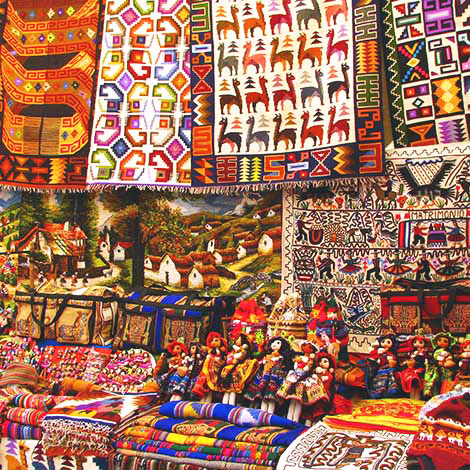
Areas: Most of the touristy artesanía and jewellery shops are concentrated in streets like Plateros around the Plaza de Armas and up Triunfo, though calles Herraje (First right as you head towards San Blas) and San Agustín have slightly cheaper but decent shops with leather and alpaca work. It´s worth heading off the beaten track, particularly around San Blas or the upper end of Tullumayo, to find outlets hidden in the backstreets.
Markets: The main street-market day for artesanía is Sat (10am-6pm). The central market, selling fresh produce, is at San Pedro. Out of town there are good markets for artesania at Pisac and Chinchero, market days being Sun and Thurs, respectively.
Opening hours: Cusco opening hours are generally Mon-sat 10am-6pm, though some of the central gift stores open on Sundays and don´t until well into the evening.
Prices and haggling: In the markets and at street stalls you can often get up to twenty percent off, and even in the smarter shops it´s quite acceptable to bargain a little. If you´re worried about carrying an expensive purchase around town, it´s fine to ask the shopkeeper to bring the goods to your hotel so that the transaction can take place in relative safety.
Genesis Bookstore Santa Catalina Ancha, at comer with Santa Catalina Angosta. One of the best places to find books in English, particularly guides history books and material on birds or wildlife; it´s also a post office agent and sells stationery.
Kuskan Bookstore C San Juan de Dios 250, inside the courtyard. This store has some fascinating books in English, particularly focusing on travel, culture and biodiversity.
Music Centre Av Sol 230. The best range of Andean and Peruvian cassettes and Cds in Cusco.
Rental or purchase of camping equipment is easy in Cusco, but you may be asked to leave your passport as a deposit on more expensive items; always get a proper receipt. For basic such as pots, pans, plates and so on, try the stalls in Monjaspata, less than half a block from the bottom end of San Pedro market, while others such as buckets, bowls and sheets are sold in various shops along Calle Concebidayoq, close to the San Pedro market area.
Andean Life Santa Teresa 381 and Calle Plateros 372, Plaza de Armas. An adventure-tour operator with a whole range of camping equipment for rent sale. Mon 9am-7pm.
Cordillera C Garcilaso 210. A smart outdoor equipment shop with lots of well-known brands, including North Face clothing. Mon-Sat 8:30am-11.15pm.
Eric Adventures Urb Velasco Astete B-8-B. A selection of camping equipment, new and old. Mon-Sat 8:30 am-6pm.
Inkas Trek C Medio 114. All the gear you´ll need, and all available to rent. Mon-Sat 10am-8pm.
X-Treme Tourbulencia Expeditions C Plateros 358. A decent range of used mountain camping equipment. Daily 10 am-8pm.
Agua y tierra Cuesta San Blas 595. Some excellent jungle textiles, ceramics, jewellery and Cushman robes. Mon-Sat 9am-7pm.
Allyu Ecologicos Av Tullumayo 280. Sells
Cusco is in the highlands of Peru in the heart of the Andean Mountains. Its altitude is 3,400 meters (11,200 feet) above sea level. At this altitude, people often suffer from altitude sickness called “soroche”. A popular local remedy for soroche is to drink coca tea. To prevent altitude sickness, take it easy on arrival, eat lightly, and drink plenty of water. You should also minimize your intake of alcohol and caffeine as these may cause dehydration and be informed of more severe symptoms.
In the highlands, we have two well-defined seasons, dry and rainy. During the summer months (May to October), the Andean countryside is at its best. Days are very hot and dry, while nights are always cold. Take protection against the cold (at any time of the year) and use sunscreen to avoid the intense solar rays. To stay warm, pack a fleece or thick sweater and pair it with a windproof jacket.
Cusco is the most visited place of Peru so you can visit at any time you want and there will always be something to do. There are catholic festivals most months, the city anniversary in June (the sun festival, Inti Raymi) and the anniversary of Peruvian independence in July.
It is possible to find more than 25 daily flight arrivals to Cusco. These flights are from the capital, Lima, and principal cities like Arequipa, Juliaca, and Puerto Maldonado. If you have more time, bus travel is a good and inexpensive option, traveling from Lima takes 18 hours on a fully paved road.
Like any big city, Cusco has crime. Pickpocketing can be a problem in crowded areas. It is advisable to avoid walking around by yourself late at night lastly, there are occasional reports of spiked drinks. Solo women travelers should only accept drinks from people they trust.
That said, your biggest concern during your visit will likely be the altitude.
Take it easy the first few days.
Policía de Turismo (tourist Police; phone 235123; Plaza Túpac Amaru s/n 24 horas) can issue police reports for stolen items.
Internet cafes are found on almost every street corner. Many hotels and cafes offer free wireless.
Pharmacies abound along Av El Sol. Cusco´s medical facilities are limited; head to Lima for serious procedures.
Clinica Pardo (Phone 240997; Av de la Cultura 710; 24 horas) is well-equipped, but expensive.
Clinica Paredes ( Phone 225265; Lechugal 405; 24 horas).
ATMs are plentiful in and around the Plaza de Armas and are also available at the airport, Huanchac train station, and the bus terminal. Casas de cambio (foreign-exchange bureaus) give better exchange rates than banks and are scattered around the main plazas and Av el Sol.
Puno is 35 minutes by plane / 5 hours by bus. Arequipa is 45 minutes by plane / 9 hours by bus.